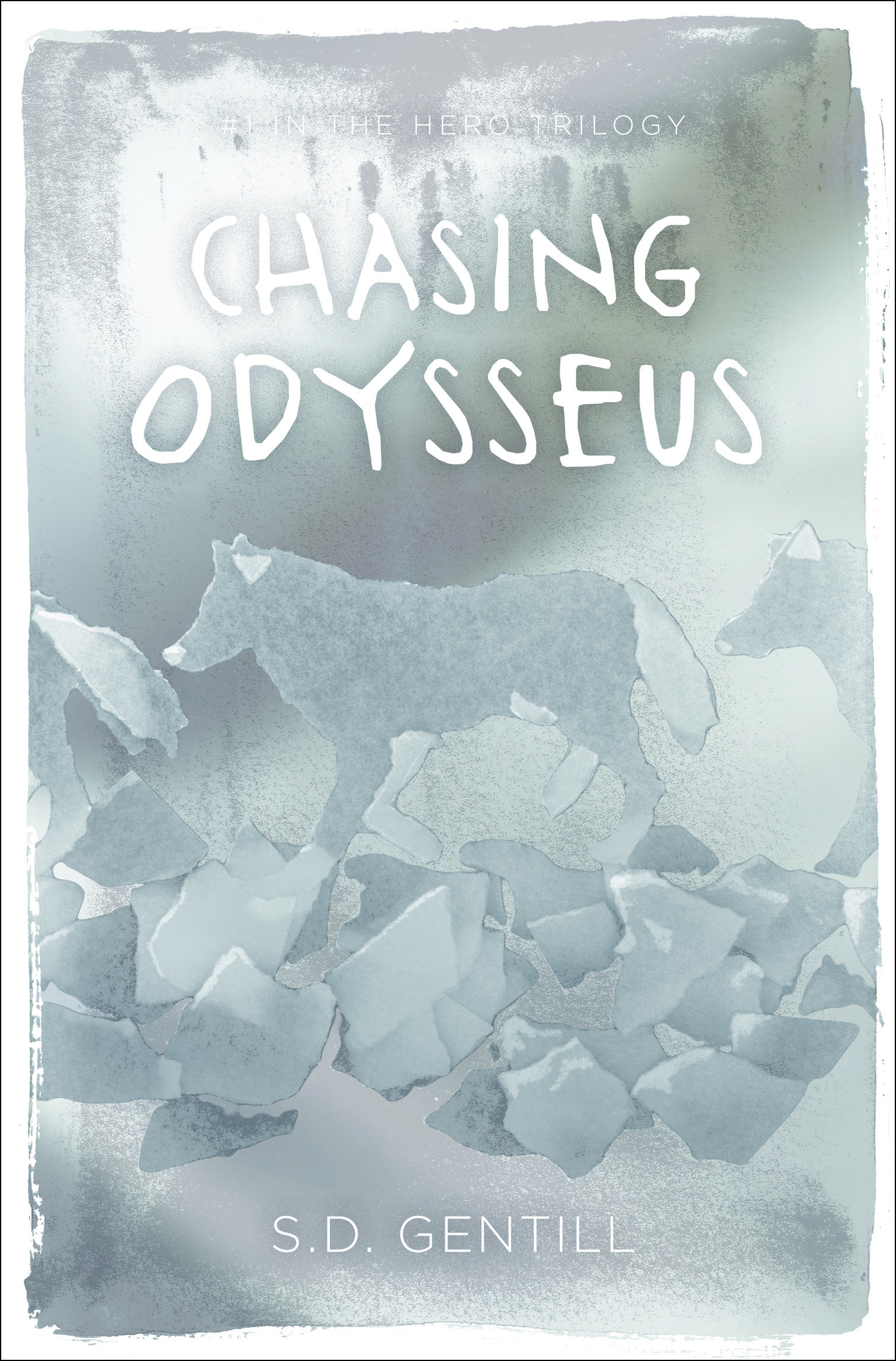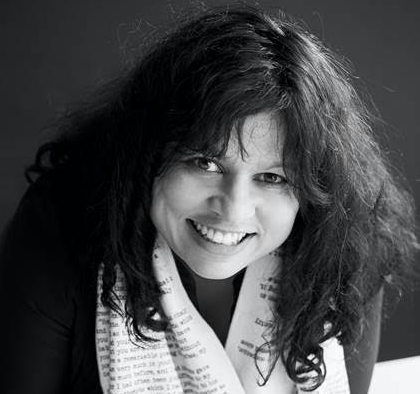Title of the work
Country of the First Edition
Country/countries of popularity
Original Language
First Edition Date
First Edition Details
Sulari D. Gentill, Chasing Odysseus (The Hero Trilogy, 1). Sydney: Pantera Press, 2011, 373 pp.
ISBN
Genre
Action and adventure fiction
Alternative histories (Fiction)
Mythological fiction
Myths
Novels
Target Audience
Young adults
Cover

Courtesy of Pantera Press.
Author of the Entry:
Anne Rogerson, University of Sydney, anne.rogerson@sydney.edu.au
Peer-reviewer of the Entry:
Elizabeth Hale, University of New England, ehale@une.edu.au
Lisa Maurice, Bar-Ilan University, lisa.maurice@biu.ac.il

Courtesy of Pantera Press.
Sulari Gentill
, b. 1971
(Author)
Sulari Gentill is an Australian author, who was born in Sri Lanka, learnt to speak English in Zambia and grew up in Brisbane. After entering university to study astrophysics, she took a degree in corporate law; she is now a full-time writer, and lives on a truffle farm in the foothills of the Snowy Mountains in New South Wales with her historian husband and two sons. She is the author of an award-winning crime fiction series set in the 1930s in Australia and overseas, featuring a gentlemanly artist amateur detective, Rowland Sinclair. Writing as S. D. Gentill, she has also produced a trilogy of mythologically-inspired adventure novels for young adult readers: the Hero Trilogy. In 2017 she published her first work of literary fiction, Crossing the Lines.
Bio prepared by Anne Rogerson, University of Sydney, anne.rogerson@sydney.edu.au
Summary
This is the first book in the author’s Hero trilogy. The story of Chasing Odysseus starts in the final days of the Trojan War. Its heroes are three teenaged brothers (Machaon, Cadmus and Lycon) and their younger sister (Hero). Their adoptive father, Agelaus, is a leader of the Herdsmen, a fiercely independent community, allied to the Trojans, who live on the slopes of Mt Ida. The Herdsmen, traditional protectors of the Trojan people, have been secretly supplying the Trojans with food through the long years of the siege; when Troy falls they enter the city by secret tunnels to rescue the survivors, smuggling Aeneas, his son, and many Trojan citizens to safety. In the early chapters of the book, Gentill’s young heroes witness the events recounted in Aeneid 2, before the faithful Herdsmen are wrongly accused by Paris’ surviving son, Scamandrios, of betraying Troy to the Greeks and Agelaus is killed as a traitor. Their father’s shameful death inspires his children to a daring undertaking which provides the structure of the rest of the novel: they embark upon a long voyage in a magical Phaeacian ship given to them by the god Pan, chasing the Greek hero Odysseus in hopes of persuading him to reveal who really betrayed Troy, and clearing the Herdsmen’s name.
The four children follow the hero on his circuitous journey towards Ithaca via the landmarks of his long trip home in the Odyssey, observing and often participating in his adventures. They visit Ismarus in the land of the Cicones, the land of the Lotus-eaters, the land of the Cyclopes, the palace of Aeolus, the country of the Laestrygonians, Circe’s island Aeaea, the Underworld, the Sirens, Scylla and Charybdis, the island of the Sun, Calypso’s palace, and lastly Phaeacia. Throughout their journey, they become actors in the events of Homer’s epic, and Gentill’s narrative provides alternative explanations for the events of the Odyssey, frequently questioning Odysseus’ heroic status as it does so. For example, it is Lycon who persuades a reluctant Odysseus to remove his companions from the land of the Lotus-eaters, promising that the deed will bring the hero the glory he craves, while Machaon provides Calypso with a plausible story to help her get rid of her unwelcome guest (in Gentill’s story, it is not Odysseus who yearns to continue his journey home but the put-upon nymph who is desperate to have him leave her in peace). Finally, in Phaeacia, with the connivance of Nausicaa and Demodocus, Odysseus is tricked into revealing how Troy fell, boasting about subverting the Trojan Scamandrios and taking full credit for the stratagem of the Trojan horse and subsequent Greek victory. At the end of the novel, Hero and her brothers sail back to their home, though Machaon leaves his heart behind with the princess Nausicaa.
Analysis
The novels of the Hero Trilogy use the possibilities offered by inserting teenage characters into the iconic myths of ancient Greece and Rome to advance a new perspective on these well-known stories and their heroes. Through reworking the Odyssey in Chasing Odysseus, and making space in the story for her child heroes, Gentill offers an alternative reading of the epic, in which the hero Odysseus appears as vain-glorious, spiteful, treacherous and selfish. The pervasive undermining of Odysseus’ heroic mystique reflects early twenty-first century suspicions of powerful men and the stories they tell. At the same time, the novel foregrounds the voices of those who are traditionally voiceless and powerless (children, women, the defeated and displaced), allowing Gentill to explore the consequences of the exploits of epic’s ancient heroes and to show a sensitive sympathy for their victims, human and otherwise. Her sceptical and practically-minded young heroes also give her space to criticise – or provide a rational explanation for – some of the apparent impossibilities of ancient epic. The determined realism and humanity of Hero and her brothers reflect some characteristic modern Australian attitudes, suggesting that true heroes are irreverent, humorous, intelligent and compassionate, who support and protect those who suffer at the hands of the brawny, violent and arrogant supermen of ancient epic.
Further Reading
Lovatt, Caroline, Helen Lovatt, and Jonathan Lovatt, “Inheriting the Past: Children’s Voices and Parenting Experiences”, in Helen Lovatt and Owen Hodkinson, eds., Classical Reception and Children's Literature: Greece, Rome and Childhood Transformation, London and New York: I. B. Tauris, 2018, 272–287.
Masson, Sophie and Elizabeth Hale, “Mosaic and Cornucopia: Fairy Tale and Myth in Contemporary Australian YA Fantasy”, Bookbird 54.3 (2016): 45–53.
Miles, Geoffrey, “Chasing Odysseus in Twenty-First-Century Children’s Fiction”, in Lisa Maurice, ed., The Reception of Ancient Greece and Rome in Children’s Literature, Leiden and Boston: Brill, 2015, 213–232.
Rogerson, Anne, “Displaced Persons and Displaced Narratives in S. D. Gentill’s Hero Trilogy”, in Marguerite Johnson, ed., Antipodean Antiquities: Classical Reception Down Under, London: Bloomsbury Academic, 2019, 167–176.


